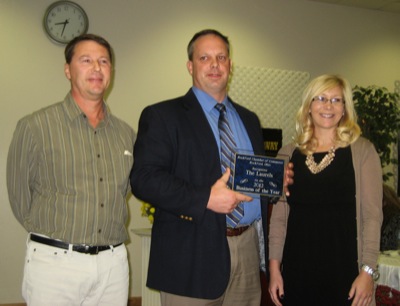Friday, November 2nd, 2012
Alum's effect unknown
Consultant says earlier comment on alum's failure was misinterpreted
By Nancy Allen
GRAND LAKE - A consultant compiling a report on the effectiveness of this year's alum treatment on Grand Lake refuted a widely circulated story that said alum treatments on the lake aren't working.
Harry Gibbons of Seattle, Wash.-based TetraTech said comments he made during a recent summit in Columbus were misinterpreted. It was reported that the alum treatment to help lessen algae blooms didn't work this summer because high winds had stirred up phosphorous-rich muck from the lake's bottom.
On Thursday, Gibbons again said wind was a factor as there was three times as much wind during this year's treatment verses last year and that did stir up the lake's bottom. But, officials do not yet know the impact. A report on the effectiveness of this year's alum treatment is still being completed, he said.
"It (alum) probably removed as much or more phosphorous than last year, but more phosphorous became available to the algae this year because it was resuspended by wind," Gibbons said. "We have to work on our analysis until we know how successful the 2012 treatment was."
The report is expected by year's end.
Alum deactivates phosphorous, the main food source of the lake's toxic blue-green algae. This year was the second time the state treated the lake with alum; the alum treatment in 2011 reduced phosphorous levels by up to 56 percent in the lake's center and 20 to 30 percent in untreated areas.
Scientists studying the lake have said it will take consecutive years of alum treatments to keep toxic blue-green algae blooms at bay.
The state the last two years has spent $8.4 million to treat the 4,900-acre center of the lake, where phosphorous levels in the sediment are the highest. To date, the lake has received 25 percent of the alum it needs to receive optimal treatment, Gibbons said.
When the state first began discussing alum as a short-term solution to the lake's algae problem, it conceded it did not have the $20 to $30 million necessary to treat the entire 13,500-acre lake with an optimal dose, Gibbons said. The state instead opted for the lower-dosed, smaller treatments, like the ones done the last two years.
Toxic algae, also called cyanobacteria, is common in many water bodies and can grow thick in waters with lots of phosphorous from manure, commercial fertilizers and sewage, often washed into streams by rain and melting snow. The algae produces liver and nerve toxins that can sicken people and kill small animals.
Most of the phosphorous that enters Grand Lake runs off farmland, the largest land use in the 58,000-acre watershed. Phosphorous-fed toxic blue-green algae blooms have resulted in advisories and millions in lost tourism on the lake the last four summers.
The state has not said whether it will pay for a third alum treatment on the lake next year. That decision will be made after the results from this year's treatment are known, officials have said.
Funding for the lake's two alum treatments came from an Ohio EPA Water Pollution Control Loan and the Ohio Water Development Authority Distressed Watershed Loan Program.
Milt Miller, manager of the local Lake Restoration Commission, said alum is just one piece of a long-term plan to solve the lake's algae problem.
"Alum was embraced because it represented a short-term solution to buy us time to get work done out in the watershed," Miller said.
Local and state officials continue to work on other projects to restore the lake, Miller said, including increased dredging, rough fish removal, installing a treatment train on Prairie Creek and adopting new manure management practices that lessen phosphorous runoff.
Gibbons agreed.
"Managing the lake has to be incremental and long term, and the phosphorous loading has to be attacked on the land in the watershed and in the water," he said.


